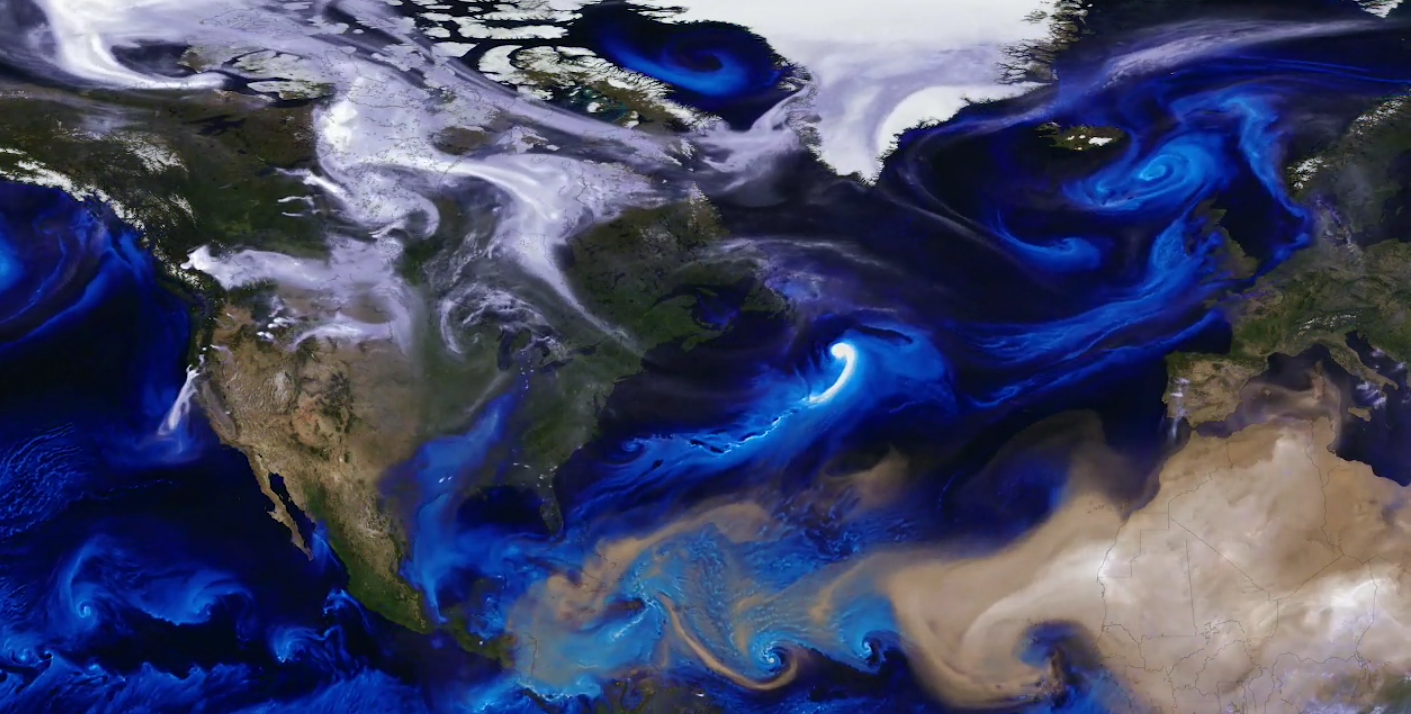Aerosols Eddy and Spiral Over Earth in Mesmerizing NASA Simulation
A gorgeous video shows off a weather model from NASA's Goddard Space Flight Center.
The Goddard Earth Observing System (GEOS) uses data from NASA satellites and computer models to track three aerosols in the atmosphere — smoke, sea salt and dust — giving a different color to each. Although often conflated with pollution, an aerosol can be any airborne particle, natural or human-made.
The video follows the three aerosols as they swirl about the Northern Hemisphere from Aug. 1 to Nov. 1, often settling thousands of miles from where they originated. Wind picks up dust from the Sahara desert and carries it west, where it gets caught in the storm systems of the mid-Atlantic Ocean. Smoke from fires in the Pacific Northwest wafts eastward across North American, eddying toward the Arctic like smoke from a blown-out candle. [Earth from Space: Classic NASA Photos]

The aerosols serve as markers for the often-invisible weather patterns scientists are interested in studying. For instance, the models show clear differences between Hurricane Ophelia and the other hurricanes of the season. While Harvey, Irma, Maria, and others headed west toward the Caribbean and Eastern Seaboard, Ophelia formed at a higher latitude, so it was exposed it to different wind patterns. The video shows how the storm was carried northeast, bringing dust from Africa and smoke from fires in Portugal toward the British Isles.
Tracking aerosols is only one of GEOS's features. The modular system can be deployed in many configurations. GEOS' power and customizability make it a versatile tool for a range of scientists studying different aspects of Earth science, NASA officials said. Much of the data fed into the model comes from the suite of satellites composing NASA's Earth Observing System mission.
Email Harrison Tasoff at htasoff@space.com or follow him @harrisontasoff. Follow us @Spacedotcom, Facebook and Google+. Original article on Space.com.
Get the Space.com Newsletter
Breaking space news, the latest updates on rocket launches, skywatching events and more!
Join our Space Forums to keep talking space on the latest missions, night sky and more! And if you have a news tip, correction or comment, let us know at: community@space.com.

Harrison Tasoff is a science journalist originally from Los Angeles. He graduated from NYU’s Science, Health, and Environmental Reporting Program after earning his B.A. in mathematics at Swarthmore College. Harrison covers an array of subjects, but often finds himself drawn to physics, ecology, and earth science stories. In his spare time, he enjoys tidepooling, mineral collecting, and tending native plants.









